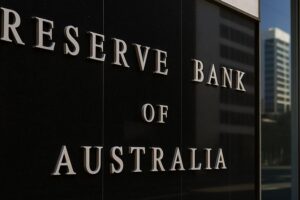Rokt’s $7.2B Valuation: Is This IPO Ready or Overhyped?
![]() Ujjwal Maheshwari, September 16, 2025
Ujjwal Maheshwari, September 16, 2025
The Australian technology sector has produced a handful of global success stories in the past decade, but few have generated the buzz now surrounding Rokt. The e-commerce software company, founded in Sydney and now operating globally, has reportedly seen its valuation reach around US$7.2 billion in connection with its dual listing plans. Earlier in 2025, secondary transactions valued Rokt closer to US$3.5 billion. Such momentum naturally raises the question: Is this the making of Australia’s next tech giant, ready for public markets, or are we looking at an overhyped IPO that risks being priced ahead of its fundamentals?
What are the Best ASX stocks to invest in right now?
Check our buy/sell tips
What Backs the Rokt Valuation
Strong Revenue Growth
Rokt’s headline number is its revenue base of around US$600 million in the past year, a figure that reflects year-on-year growth of about 40–43%. Growth of this magnitude is rare among software firms at such a scale, particularly in the e-commerce segment, where customer acquisition costs can be high. Investors have understandably been impressed, seeing Rokt as a growth engine in a market that has otherwise slowed since the pandemic-driven e-commerce boom began to normalise. This revenue expansion has not been a one-off spike but part of a consistent trend. Rokt has demonstrated resilience even as broader retail spending patterns have softened across the US, Europe, and Asia. The fact that it can maintain such growth rates despite these headwinds indicates that its product continues to deliver measurable value to enterprise customers.
Profitability and Cash Generation
What further distinguishes Rokt from many so-called unicorns is its profitability metrics. In recent years, markets have punished high-growth IPOs that could not demonstrate a path to profitability, think of Deliveroo’s struggles in London or some US SaaS companies that floated on aggressive multiples but continued to haemorrhage cash.
Rokt has claimed strong unit economics while expanding at over 40% year-on-year. If profitability is confirmed under public reporting, this would set it apart, as few private technology firms combine such scale and growth.
Product Strength and Customer Stickiness
The core of Rokt’s business lies in its e-commerce software, which inserts targeted offers into the checkout experience. By focusing on the “moment of transaction”, the company has carved out a lucrative niche. For retailers and ticketing platforms, Rokt’s software is not just an add-on but a revenue-generating tool that increases conversion and basket size.
We believe this is central to understanding why the business commands such loyalty from enterprise customers. Integrating Rokt’s software development kit (SDK) into a platform requires technical investment, making it sticky and difficult to rip out once installed. The company has further reinforced this position by recently raising minimum customer spend levels and introducing price increases. While such moves carry some risk, they also show that Rokt has pricing power, another hallmark of a business with competitive strength.
What Raises Scepticism and Risks
Stretch Valuation Multiples
Based on the earlier US$3.5 billion secondary valuation and US$600 million in revenue, Rokt was trading at closer to 6x trailing revenue. The 12x figure only applies if the unconfirmed US$7.2 billion valuation proves accurate. For context, listed global e-commerce software firms and SaaS providers often sit in the 5x to 10x range, depending on their growth and profitability. On one hand, Rokt’s combination of growth and cash generation arguably deserves a premium. On the other hand, investors must consider whether the private market is inflating valuations in anticipation of a successful IPO rather than grounding them in comparable public benchmarks. The danger is obvious. If Rokt lists at too aggressive a multiple and markets turn risk-off, the stock could suffer the same fate as other overhyped IPO companies whose share prices slumped once public investors scrutinised their metrics more closely.
Secondary Market Optimism vs Fresh Capital
It is also worth noting that the latest US$7.2 billion figure has been cited in IPO and dual listing discussions, but it has not been confirmed by a primary capital raise. The most recent public secondary trades valued Rokt at about US$3.5 billion. This distinction matters. Secondary mark-ups often reflect optimism within a closed group of investors rather than the hard reality of new institutional capital putting fresh money into the business at those levels. For IPO-minded investors, this should be a signal to exercise caution.
Volatile Market Conditions
The broader macro environment cannot be ignored. IPO markets globally remain fragile, with investors alternating between appetite for growth stories and a retreat to defensive plays depending on interest rate outlooks and inflation data. In Australia, several mid-cap technology IPOs over the past five years have stumbled due to shifting investor sentiment. For Rokt, even with strong fundamentals, timing will be everything. Launching into a volatile market could overshadow its business strengths.
Complexity of a Dual Listing
Another layer of risk lies in Rokt’s reported ambition for a dual listing on the ASX and Nasdaq. While the prestige of a Nasdaq listing is clear, the complexity it introduces cannot be underestimated. Maintaining compliance with both US and Australian regulatory regimes is costly and resource-intensive. Dual currency exposure, differing disclosure standards, and the divergence in investor expectations add to the execution challenge.
Australian investors tend to be more conservative, focusing on profitability and dividends, while US investors often reward aggressive growth and market capture. Meeting the expectations of both groups simultaneously will be no easy feat.
Dual Listing: Prestige Meets Complexity
If Rokt follows through with a dual listing, it will be one of the most ambitious corporate strategies attempted by an Australian technology company.
The benefits are clear. A Nasdaq listing offers access to deeper pools of capital and the prestige of being benchmarked against global software leaders. An ASX listing, meanwhile, maintains local investor access and satisfies regulators and policymakers eager to see Australian-founded businesses remain at least partially domestically listed.
But the challenges are equally real. The dual reporting obligations are onerous, compliance costs will rise significantly, and management attention could be stretched between two markets. This raises a fundamental question: Does the prestige of a dual listing outweigh the distraction it could cause for management? For long-term investors, the answer depends on whether the added liquidity offsets the heightened execution risk.
Valuation vs IPO Readiness
Valuation alone does not determine IPO success; readiness does. By increasing minimum spend requirements and adjusting pricing strategies, Rokt is clearly fine-tuning its metrics to present a stronger picture to prospective IPO investors. This is a sensible move, but one that could backfire if customers push back too hard.
The sustainability of 40–43% growth is another question mark. Few companies sustain that rate indefinitely once they reach hundreds of millions in revenue. Even global leaders like Shopify saw growth moderate once they scaled. Investors must ask: Is Rokt’s current pace a reflection of a still-underpenetrated market, or is it nearing the natural ceiling of its niche?
Profitability will also be scrutinised. Rokt may be cash generative today, but post-IPO expectations around quarterly reporting could reveal costs not fully visible in private accounts. How margins evolve as the company scales into new markets will be a critical determinant of valuation durability.
What Investors Should Watch
As the IPO discussion develops, several key metrics will deserve investor attention.
First, watch the top-line revenue numbers. If growth dips below 30%, the case for a stretched revenue multiple weakens significantly. Second, examine the margin profile. Is profitability improving, or is it being sacrificed for expansion? Third, consider customer concentration risk. If a small group of clients drives a disproportionate share of revenue, the business becomes more vulnerable to churn.
Investors should also watch for details in the IPO prospectus, once filed. This document will provide the clearest insight into governance structures, customer contracts, and risk disclosures. Additionally, keep an eye on the secondary market for employee options and private stake sales. If insiders are eager to exit, that may signal caution. If they hold, it suggests confidence in further upside.
Bottom Line: Ready or Overhyped?
Rokt represents one of the most compelling Australian technology stories of the decade. A valuation of US$7.2 billion, strong double-digit revenue growth, makes it stand out among global peers. Its product has carved out a profitable niche in e-commerce, and its dual listing ambitions show confidence in its international potential.
But the risks cannot be ignored. Valuation multiples are stretched, IPO markets remain volatile, and the dual listing adds complexity. Rokt is IPO-ready in terms of fundamentals, but whether it delivers post-listing returns will depend on execution, timing, and investor sentiment.
For growth-oriented investors with a tolerance for volatility, Rokt’s IPO could represent a chance to back a rare Australian tech company with global scale. For more cautious investors, waiting for the stock to settle post-listing and for financials to be reported under public scrutiny may be the safer path.
FAQs
- What is Rokt’s current valuation?
Rokt is valued at around US$7.2 billion in connection with its IPO plans, though earlier in 2025, secondary transactions valued the company closer to US$3.5 billion.
- How much revenue does Rokt generate?
The company reported around US$600 million in revenue last year, growing at 40–43 percent annually. The challenge will be sustaining this pace as the business continues to scale.
- Is Rokt profitable?
Rokt is revenue-generative, and there are suggestions that it may be cash flow positive, though this has not been publicly confirmed. Investors will want to see how margins hold under public reporting.
- Where will Rokt IPO?
The company is considering a dual listing on the ASX and Nasdaq. This would give it access to global capital, but also adds significant compliance and execution complexity.
- What risks do investors face?
Key risks include a high revenue multiple, reliance on secondary valuations, volatile IPO conditions, and the burden of a dual listing. Any misstep could lead to a sharp downside.
Blog Categories
Get Our Top 5 ASX Stocks for FY26
Recent Posts
China Stimulus Hope Fades: What It Means for ASX Iron Ore Giants
The Australian mining sector, particularly the iron ore giants, is undergoing a period of uncertainty, marked by the fading hopes…
RBA Holds at 3.60%: The November Cut That Isn’t Coming
The Reserve Bank of Australia (RBA) recently announced it was holding its cash rate at 3.60%, putting to rest widespread…
When Ray Dalio Talks, Investors Listen! Here’s His Latest Advice For Investors!
As one of the world’s most famous and successful investors, Ray Dalio’s words are always taken notice of by the…



